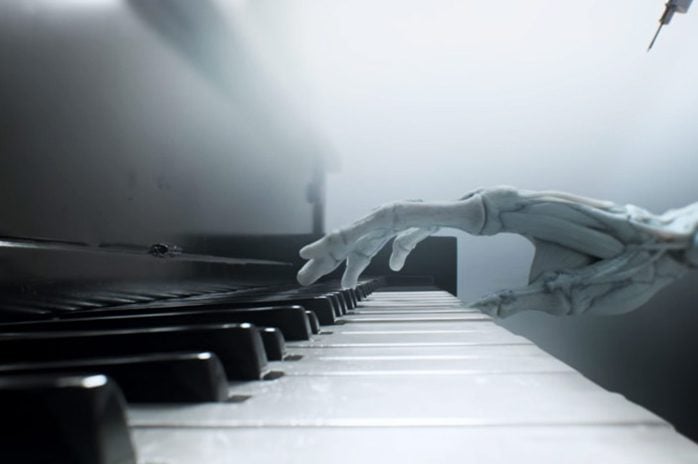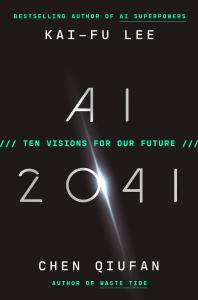The philosopher Albert Borgmann claims that we are blind to the dynamics and nature of our advanced technological culture. Over the last few hundred years, he argues, substantial things and practices have been displaced with superficial commodities and consumption.
When we behold Cool Whip, for example, we see imitation whipped cream. But beneath this visible surface, there is an invisible structure of scientific and technological processes that have produced this commodity for our consumption. Borgmann calls this compound visible-invisible phenomenon the device paradigm—“a distinctive pattern of … division and connection.” Digital technologies, such as the smart refrigerator that tracks the existence and expiration of our preferred brand of whipped topping, are complicating our relationships with things and practices even further. As we begin to understand these complexities, we realize that the freedom and progress enabled by technology may include new forms of captivity and regress.
Behold the Player Piano
The device paradigm is a helpful concept for highlighting the differences between—as well cultural changes connected with—different technologies. Consider the differences between a piano and a player piano. Both are technologies, but to play the first requires knowledge and skill; to play the latter requires following simple operating instructions. Both entertain, but the former continues to have what Borgmann calls a commanding presence. The latter was superseded by more sophisticated forms of recorded music. Appreciating differences between enduring practices and things, such as playing pianos, and disposable devices, such as player pianos, can help us see the limits of technology and clarify our values.
In the midst of the last century, William Gaddis, who wrote challenging novels for an audience made smaller by the introduction of television, began working on a complex project called Agapē Agape: The Secret History of the Player Piano. Gaddis described his planned book as “a satirical celebration of the conquest of technology and of the place of art and the artist in a technological democracy.” According to Gaddis, the player piano represented an approach to art that linked “a criterion of usefulness and the doctrine of progress” with a technology “designed to accomplish tangible and predetermined ends.” Like other information technologies, the player piano intruded into an area where such an approach “is not only impossible but absurd.
Rather than working to become an artist and produce art, there was: “the opportunity to participate in something which asked little understanding; the pleasure of creating without work, practice, or the taking of time; and the manifestation of talent where there was none.” Gaddis reported on a “child in Seattle who had spent his full five years among [player pianos and] was an expert demonstrator.”
For Gaddis, the player piano was the leading figure or device in a dark comedy about the subordination of “the frail human element”—of that part of us that cares about such virtues as love (agápē) and “the essence and eternal questions of being”—to scientific management and engineering systems determined to fulfill the promise of perfected mediocrity.
Kurt Vonnegut, another dark comedian whose work is contemporaneous with Gaddis’s, titled his first novel Player Piano. In this dystopia of automation, machines outperform and displace human work. Efficiency is the greatest value and only wisdom. The “right of technology to increase in power and scope” is unchallenged, and there is no reason or place for someone “to wonder where people are, where they’re going, and why they’re going there.”
Like Gaddis, Vonnegut encourages us to look at the structure beneath the surface of the player piano. The player piano, designed to entertain with its automatic keys, eerily recalls the ghost that taught the machine to play—the person, machine logic concludes, who is no longer needed to create but only to consume. In the end, the denizens of Vonnegut’s dystopia revolt to reassert their agency over the machines. But after their destruction, on the penultimate page, a bright young teenager is found scavenging for parts for “a gadget that’d play drums like nothing you ever heard before.”
Behold the Player Person

With the advent and ubiquity of digital technologies, which further intensify the dividing and connecting pattern of the devise paradigm, things have become even more complicated and we now face a digital device paradigm. Added to a perceptible surface and an elusive structure is an enveloping environment of surveillance. Some aspects of this might be desirable: our refrigerators can monitor our supply of whipped topping and order more before we run out. Other aspects of this are disturbing: our monitored preference for whipped topping may be used to manipulated us to consume more high-fructose corn syrup or to vote for a candidate who will advance the special interests of the HFCS lobby. But the most troubling aspect of the digital device paradigm is that it converts us into informational commodities.
The specter of the player piano is still with us and was recently singled out as an overlooked but important figure in Westword, HBO’s “dark odyssey follow[ing] the dawn of artificial consciousness and the evolution of sin.” In the show’s opening title sequence a piano is played by artificial hands, but eventually the hands rise above the keys to reveal that the piano is automated. Player pianos appear throughout the series and one is used for the show’s soundtrack, using perforated paper rolls created from digital sound files. (The effect, composer Ramin Djawadi observes, has “a robotic harshness to it … when the player piano hits a note, it’s always the same.”)
In Westworld, Vonnegut’s ghost before the player piano is replaced with a player person: machines play human-like roles (and pianos). As for humans, the show’s promotional tagline, “Live without limits in a world where every human appetite can be indulged,” promises new freedoms. The themes of surveillance and judgement that dominate Westword’s narrative belie this promise.
Limits will be transgressed and realized, and the questions the device paradigm raises about human uniqueness, values, and moral agency—now augmented by the realities of digital division, connection, and scrutiny—will need to be confronted.
Vonnegut’s opening epigram for Player Piano comes from the Sermon on Mount, when Jesus asks his hearers to consider how the lilies of the field, which grow without working or making their own clothing, are more gloriously clothed than Solomon. The lilies, as an emblem of freedom, suggest a pattern of life richer than those informed and formed by a pre-digital or digital device paradigm.
Technology offers freedom from many things: freedom from hunger, disease, ignorance, confinement, inequity, material poverty, and much more (such as needing to know how to play the piano, or being near someone who does, to enjoy piano music). But for what does technology free us? Prosperity and opportunity, is the simple reply—but to what end beyond the freedom to consume and be consumed? “Perhaps underneath the surface of technological liberty and prosperity,” Borgmann writes, “there is a sense of captivity and depression, and we may hope that once we understand technology more incisively and clearly, there will be good news.”












